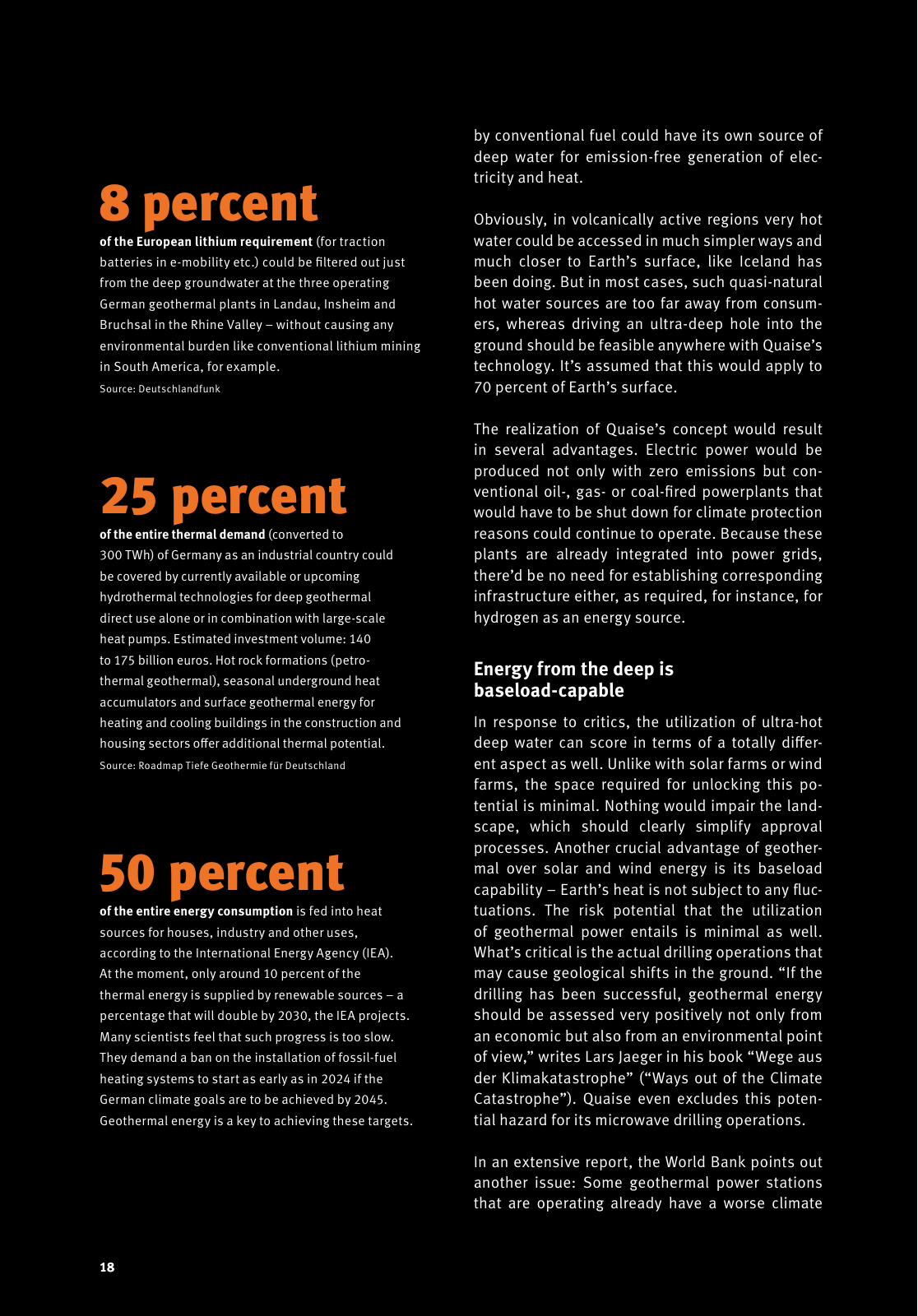by conventional fuel could have its own source of deep water for emission free generation of elec tricity and heat Obviously in volcanically active regions very hot water could be accessed in much simpler ways and much closer to Earth s surface like Iceland has been doing But in most cases such quasi natural hot water sources are too far away from consum ers whereas driving an ultra deep hole into the ground should be feasible anywhere with Quaise s technology It s assumed that this would apply to 70 percent of Earth s surface The realization of Quaise s concept would result in several advantages Electric power would be produced not only with zero emissions but con ventional oil gas or coal fired powerplants that would have to be shut down for climate protection reasons could continue to operate Because these plants are already integrated into power grids there d be no need for establishing corresponding infrastructure either as required for instance for hydrogen as an energy source Energy from the deep is baseload capable In response to critics the utilization of ultra hot deep water can score in terms of a totally differ ent aspect as well Unlike with solar farms or wind farms the space required for unlocking this po tential is minimal Nothing would impair the land scape which should clearly simplify approval processes Another crucial advantage of geother mal over solar and wind energy is its baseload capability Earth s heat is not subject to any fluc tuations The risk potential that the utilization of geothermal power entails is minimal as well What s critical is the actual drilling operations that may cause geological shifts in the ground If the drilling has been successful geothermal energy should be assessed very positively not only from an economic but also from an environmental point of view writes Lars Jaeger in his book Wege aus der Klimakatastrophe Ways out of the Climate Catastrophe Quaise even excludes this poten tial hazard for its microwave drilling operations In an extensive report the World Bank points out another issue Some geothermal power stations that are operating already have a worse climate of the entire thermal demand converted to 300 TWh of Germany as an industrial country could be covered by currently available or upcoming hydrothermal technologies for deep geothermal direct use alone or in combination with large scale heat pumps Estimated investment volume 140 to 175 billion euros Hot rock formations petro thermal geothermal seasonal underground heat accumulators and surface geothermal energy for heating and cooling buildings in the construction and housing sectors offer additional thermal potential 25 percent Source Roadmap Tiefe Geothermie für Deutschland of the entire energy consumption is fed into heat sources for houses industry and other uses according to the International Energy Agency IEA At the moment only around 10 percent of the thermal energy is supplied by renewable sources a percentage that will double by 2030 the IEA projects Many scientists feel that such progress is too slow They demand a ban on the installation of fossil fuel heating systems to start as early as in 2024 if the German climate goals are to be achieved by 2045 Geothermal energy is a key to achieving these targets 50 percent of the European lithium requirement for traction batteries in e mobility etc could be filtered out just from the deep groundwater at the three operating German geothermal plants in Landau Insheim and Bruchsal in the Rhine Valley without causing any environmental burden like conventional lithium mining in South America for example Source Deutschlandfunk 8 percent 18

Hinweis: Dies ist eine maschinenlesbare No-Flash Ansicht.
Klicken Sie hier um zur Online-Version zu gelangen.
Klicken Sie hier um zur Online-Version zu gelangen.